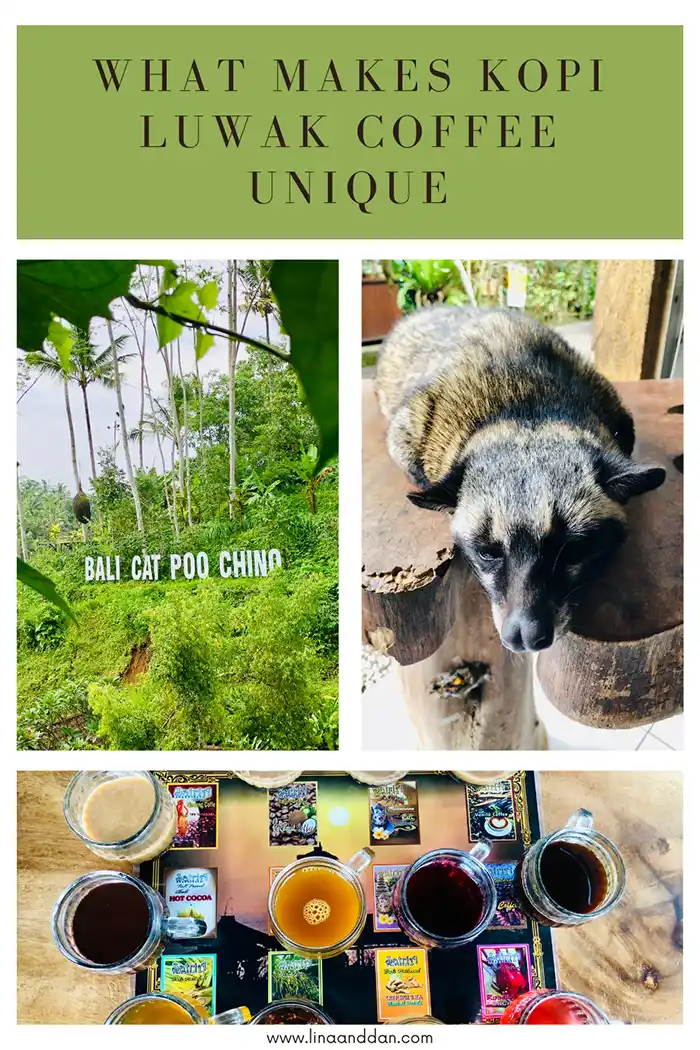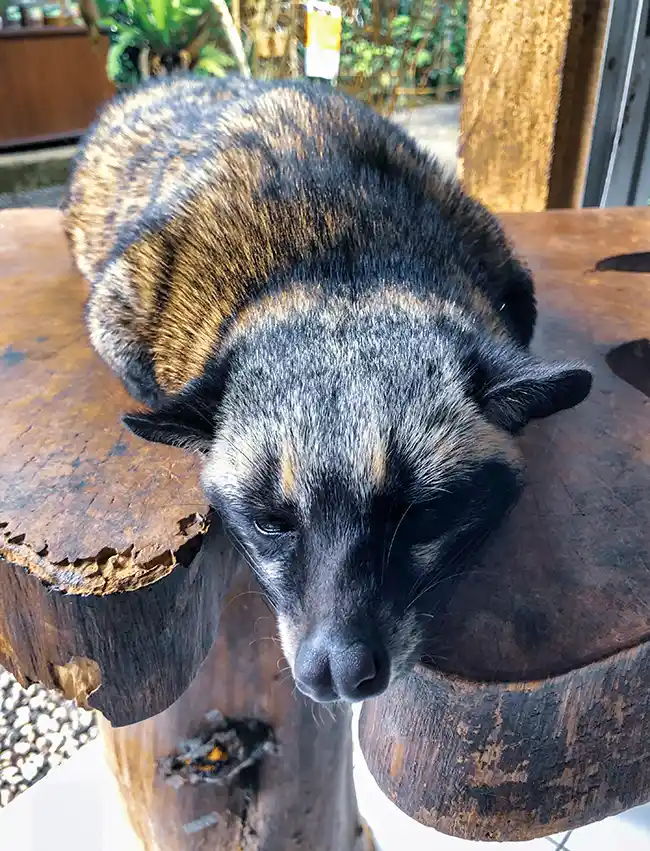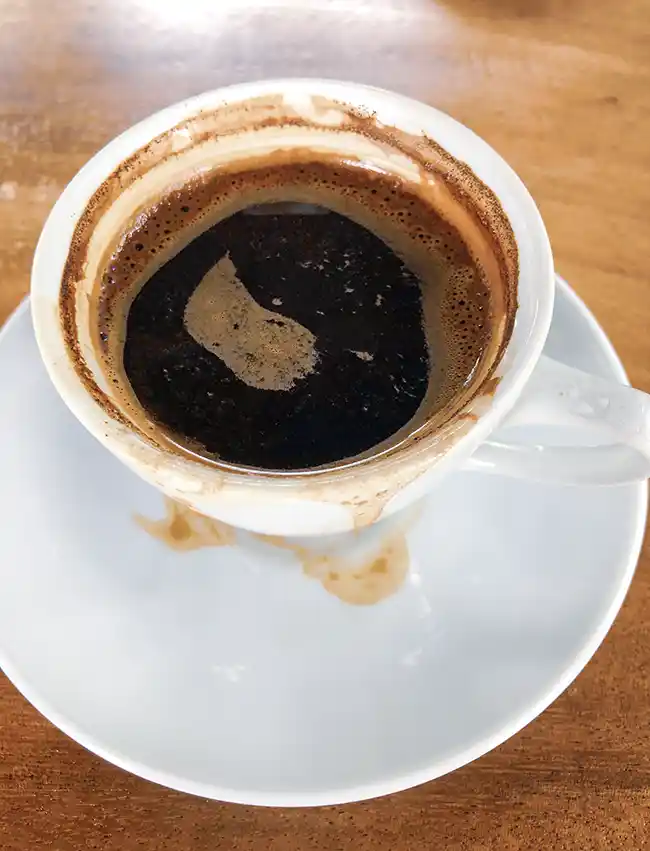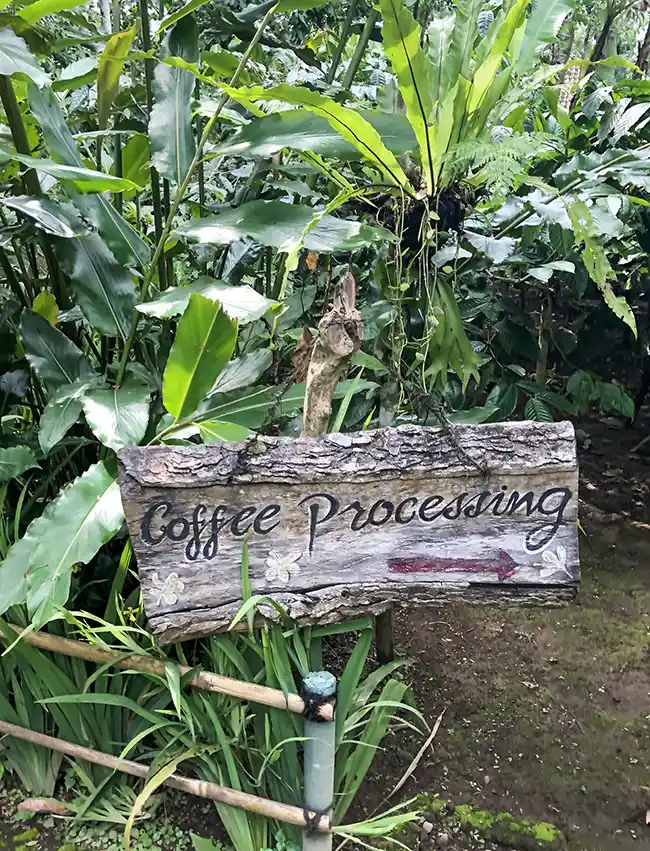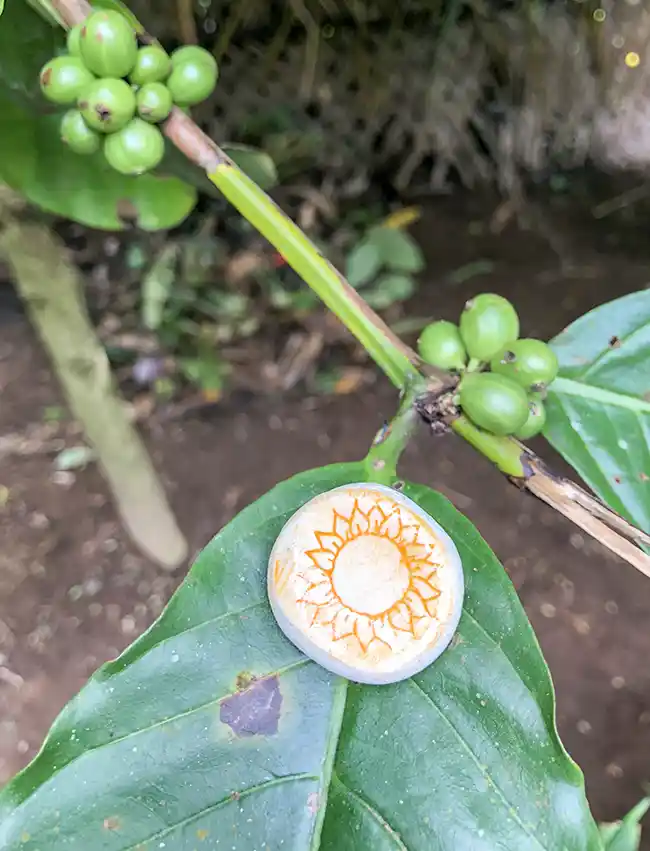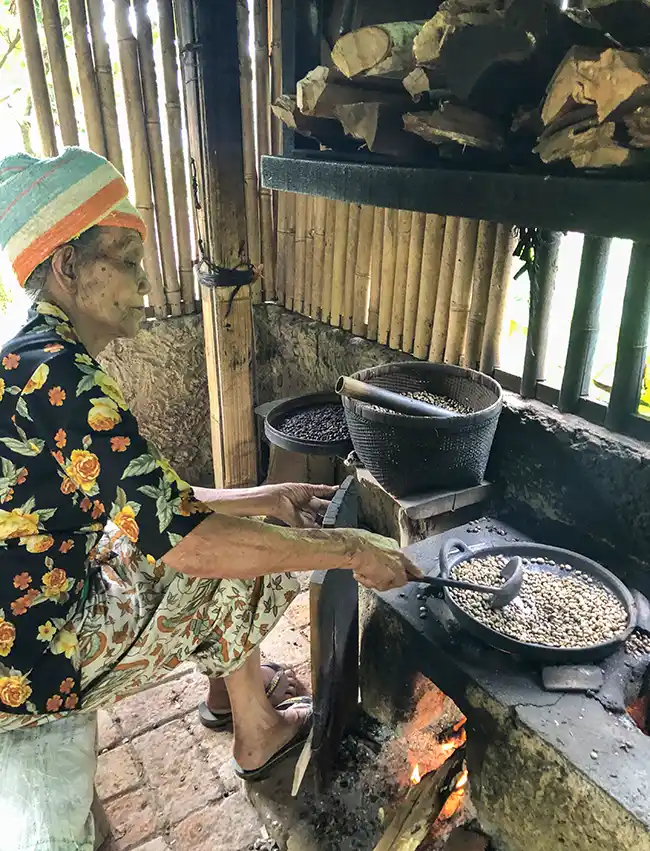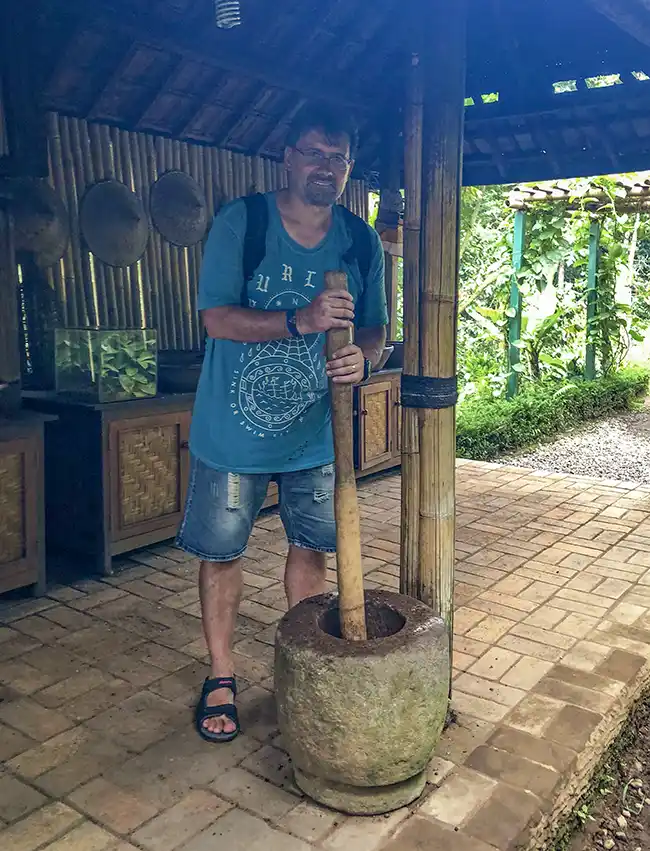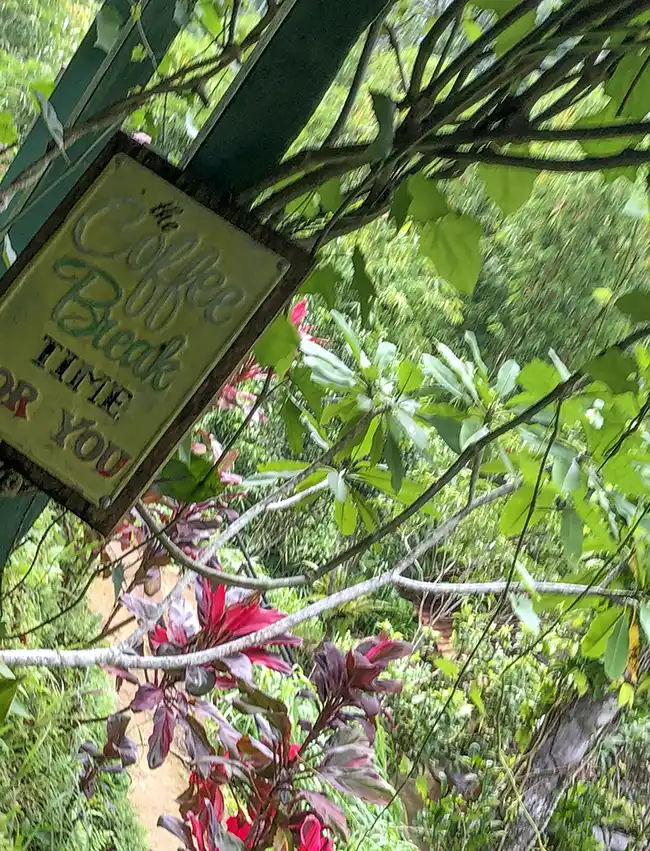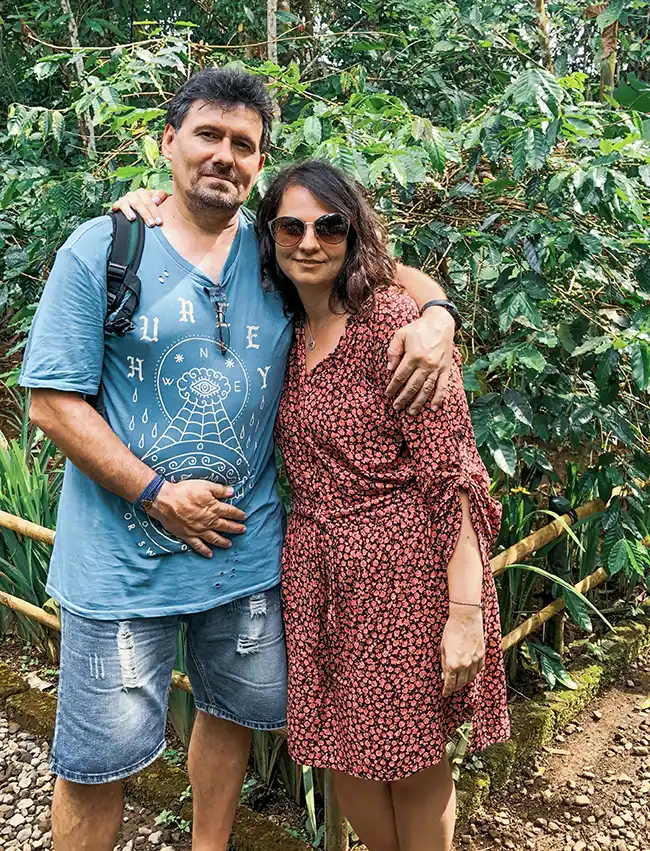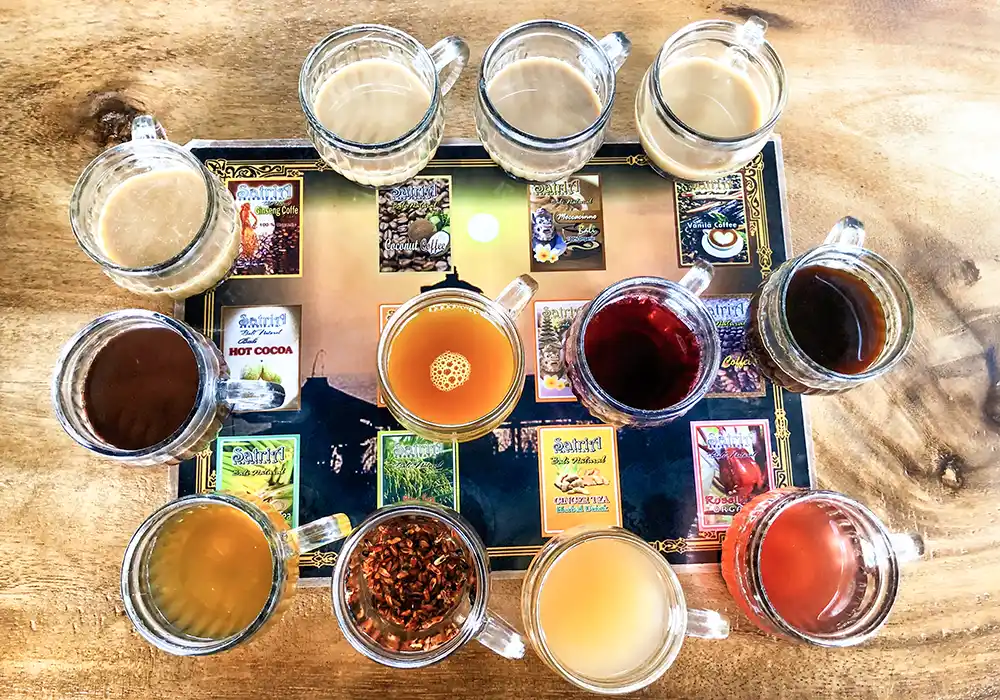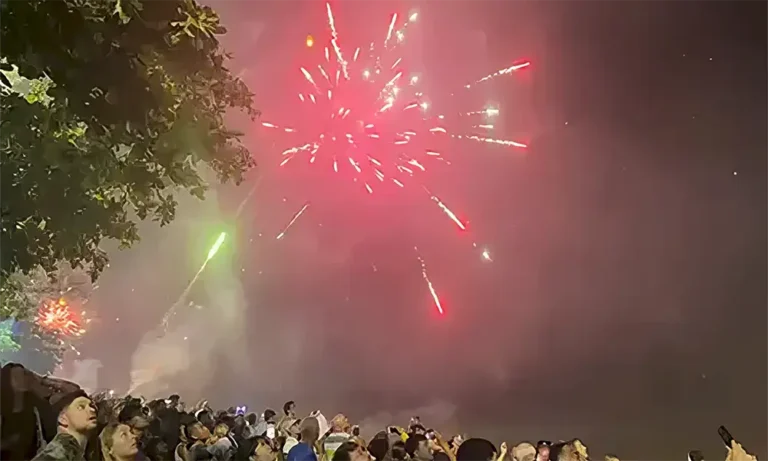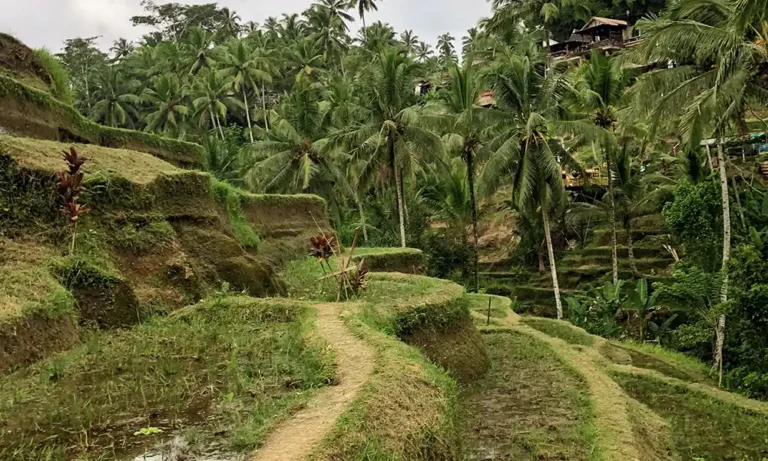What Makes Kopi Luwak Coffee Unique
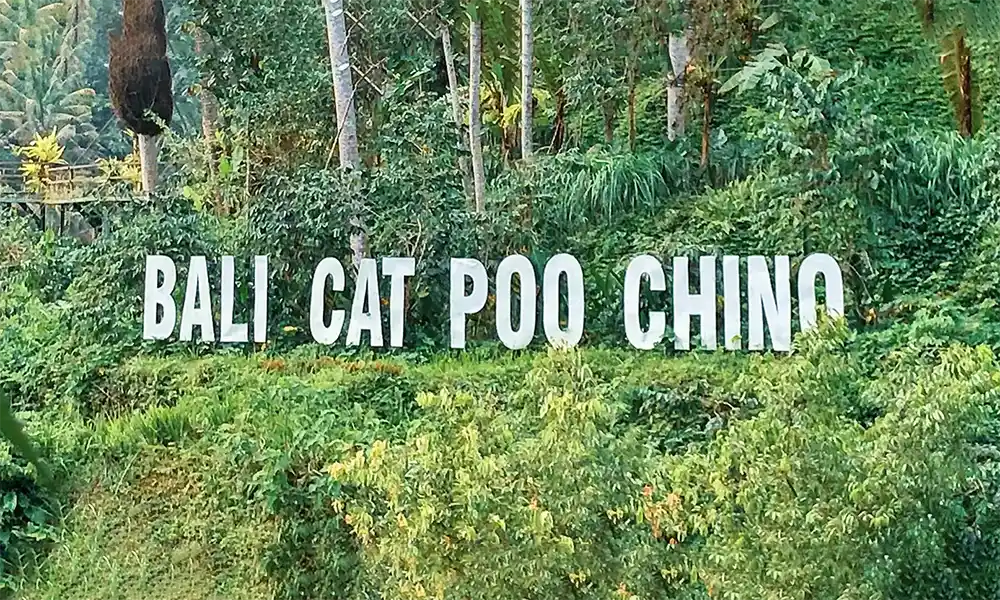
Bali is full of surprises, and just when we thought we’d seen it all, our driver told us about a stop called “Cat Poo Chino.” As a result, the unusual name immediately caught our attention.
He told us we could try one of the world’s most expensive coffees — and that was all we needed to hear. The idea sparked our curiosity right away.
Short on time?
What Is “Cat Poo Chino”?
For those who don’t know, “Cat Poo Chino” is a playful nickname for Kopi Luwak — also known as civet coffee. Civets, small jungle animals, eat the beans and naturally ferment them in their digestive system. The process gives the coffee a unique and smooth flavor.
Our driver explained that this wasn’t just a tasting stop. It’s a full experience deep in the jungle, where you can see coffee plants and learn how the beans go from tree to cup. However, even though we’re not big coffee drinkers, we couldn’t pass up the chance to try something so rare.
The tasting takes place at Satria Coffee Plantation in Ubud, Gianyar Regency. It’s open daily from 9 AM to 6 PM. The plantation is about an hour from Bali’s airport and just 15 minutes from Tegenungan Waterfall: A Hidden Gem in Ubud’s Natural Paradise. It’s also only 15 minutes from the Sacred Monkey Forest, making it easy to include in your Ubud itinerary.
How to Get There?
Scooter (DIY)
Popular with backpackers and couples who want the freedom to stop at rice fields along the way.
- 30–45 minutes from Ubud
- Helmet required by law
Car / Taxi
Most comfortable way to get there. Private drivers or Grab/Gojek taxis can take you directly to the plantation.
- Best for groups or families
- Hire a driver for the day (~$40–50 USD)
Guided Tour
Many Ubud day tours include a stop at Satria Coffee Plantation along with temples and rice terraces.
- Hassle-free option
- Often combined with Bali Swing
Typical Drive Times
Combine with Other Stops
Best Way
DIY Note
🐈 Say Hello to the Cute Civet: The Secret Behind Exotic Coffee
The civet cat is the jungle animal behind the world-famous Kopi Luwak coffee. Despite being wild, civets can be surprisingly calm and charming—especially when they’re used to people.
The one we met was peacefully lounging and seemed to enjoy gentle attention. He stayed quiet and relaxed, even letting us give him a soft hug. Spending time with him made the visit unforgettable. It gave us a rare, up-close look at the creature behind one of the most unique coffees on Earth.
From 💩 to World-Famous Kopi Luwak Coffee
In fact, our journey into the world of Luwak coffee, also known as Kopi Luwak, was a fascinating experience that revealed how this unique brew is crafted from jungle cherries to a world-famous delight. Here’s how it all unfolded for us:
🌿 Growing in the Jungle Garden
It all began on lush, tropical coffee plantations, where we were greeted by vibrant rows of coffee trees heavy with ripe cherries, just waiting to be harvested. Seeing these plantations for the first time was breathtaking, and we couldn’t help but feel excitement in the air as we explored the beautiful landscape filled with the rich aroma of coffee.
🐾 Feeding the Civet
As we wandered through the plantation, we encountered the adorable civet cat, a charming little creature that roams freely among the coffee trees. We learned that the civet has a natural instinct to select only the ripest cherries, which it eagerly consumes. Watching this cute animal enjoy its meal was a highlight, knowing it plays such a crucial role in creating the unique qualities of Luwak coffee.
🧬 Fermentation in the Stomach
Once the civet devours the cherries, they begin to ferment in its stomach. We discovered that the enzymes in the civet’s digestive system break down the proteins in the beans, reducing bitterness and enhancing their smooth flavor. This fascinating process truly added to the allure of Kopi Luwak.
💩 Poop Collection
After digestion, the civet leaves behind its droppings, which contain the partially fermented coffee beans. We were surprised to see designated spots around the plantation where the civets naturally go, making it easy for farmers to collect these precious beans without disturbing the animals.
☀️ Washing and Drying
The beans are then carefully washed to remove any residue and laid out to dry under the sun. We observed some of these beans drying, lined up in the sun and waiting for the next steps. This natural drying process plays a vital role in intensifying the beans’ unique, earthy flavor.
🔥 Roasting
After drying, the beans are roasted at specific temperatures and times to lock in their rich taste. We learned that roasting is an art, with variations from light to dark depending on the desired flavor profile. The anticipation of tasting the final product was palpable as we watched this step unfold.
🎁 Final Touches and Branding
First, the roasted beans are packaged and sold as Kopi Luwak, known as a rare and luxurious coffee product. Then, the process continues to the cup, creating coffee that is rich, smooth, and subtly complex in flavor. As a result, the taste is unlike anything else you can try in Bali. Moreover, it’s an experience that fascinates coffee lovers worldwide. In the end, we were thrilled to be part of it.
Hands-On Roasting and Grinding Experience
It was amazing to take part in roasting and grinding the beans ourselves! The process was done over a wood fire, adding a rustic, authentic feel. Roasting took about 15 to 20 minutes over low heat, giving the flavors time to fully develop.
Afterward, we ground the beans by hand into a fine powder — a fun and rewarding step. Being involved from start to finish made our cup of coffee even more meaningful and memorable.
Exploring Bali’s Jungle Plantation Before Our Kopi Luwak Tasting
After roasting and grinding, we had time to explore the jungle plantation and take photos. The scenery was stunning — surrounded by lush greenery and plenty of Instagram-worthy props.
Therefore, keep in mind that the photo spots can get crowded. We recommend visiting in the afternoon. We went in the morning and found it pretty busy. Giving yourself extra time helps you enjoy the experience without feeling rushed.
A Unique Coffee & Tea Tasting Experience
We’re not big coffee drinkers; however, we couldn’t resist trying the world’s most famous brew, prepared fresh right in front of us. The coffee tasted smooth and rich, with earthy notes and even a savory touch, almost like curry. In addition, we noticed subtle hints of fruit and a light chocolate finish. Overall, tasting it straight from the source made it extra special.
Besides the coffee, we also tried 12 other plantation-made products, including teas. As tea lovers, we enjoyed every sip, and the brown rice tea, for example, had a nutty depth unlike anything we’d tried before. We even brought home lemongrass tea for the road, and in fact it became a favorite during the rest of our travels. Ultimately, the mix of coffee, chocolate, and tea turned out to be both flavorful and educational.
